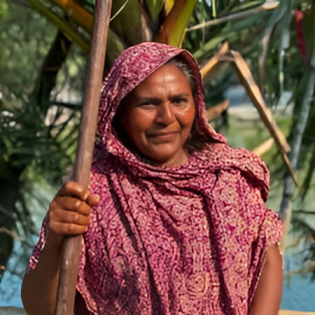Bangladesh: The daily fight for survival in the mangrove shadows

“My hunger doesn’t care about tigers,” she says. “It doesn’t care about a tiger’s hunger. It takes me to the river to fish.”
Mahfuza grips her fishing net tightly as she steps into the murky waters of the river that snakes through the Sundarbans—the world’s largest mangrove forest.
Her eyes instinctively scan the horizon, not just for the glimmer of fish beneath the surface, but for tree stripes—signs of a Bengal tiger nearby.
Here, the water sustains life, and yet it’s lined with death.
The mangroves of southern Bangladesh are breathtaking: tangled roots rising from the earth, birdsong echoing across the canopy, and the constant lapping of water against wooden canoes.
But for the people who live on the fringes of this forest, the beauty is often overshadowed by the brutality of survival.
Mahfuza is one of many women in her village who venture deep into these forests to fish, crab, and collect honey—livelihoods passed down through generations. But the risks are immense.
Each trip into the forest could be her last. Bengal tigers, saltwater crocodiles, and snakes haunt these woods. Many women have returned with scars. Some never return at all.
Still, Mahfuza goes.
"My hunger doesn’t care about tigers," she says. "It doesn’t care about a tiger’s hunger. It takes me to the river to fish."
She is not fearless, but she is determined. Hunger, she explains, doesn’t wait for safe conditions. It gnaws at her children’s bellies, presses against her bones, and drives her forward.
In her home, where poverty is a daily companion and storms from the Bay of Bengal grow stronger each year due to climate change, the mangrove forest is both a provider and a predator.
Her husband was once the one who fished and gathered in the forest, but after he was injured in a boating accident, the responsibility fell to her. At first, she was afraid. Then she was angry. Now, she is simply resolute.
Armed with little more than nets, courage, and ancient knowledge of tides and trees, Mahfuza joins dozens of other women who’ve rewritten the traditional roles of their community.
Together, they navigate waters that are increasingly unpredictable due to rising sea levels and stronger cyclones, some of which have washed away entire villages.
Despite the dangers, Mahfuza believes in the dignity of her work. The fish she catches fill her family’s plates.
The income from selling extra catch helps pay for her children's school books. And the strength she’s built—the calluses, the balance, the instincts—reminds her that survival is its own kind of power.
Still, she dreams of a life where fishing doesn’t come with the fear of being hunted. Where her children can find jobs that don’t involve the river.
But until that day comes, Mahfuza will rise each morning before the sun, check the tides, and push her boat into the water—driven by hunger, yes, but also by love.
(This Article was adapted from an Al Jazeera Report)
